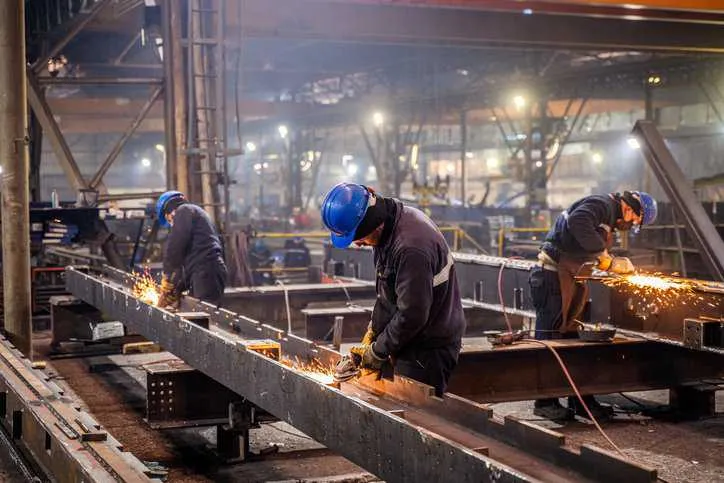ANSI/ASSP Z9.6-2018: Grinding, Polishing & Buffing Machines

Grinding, polishing, and buffing machines are indispensable machines across industries and manufacturing processes. Just like how editing is used to refine the writing process, these machines are used to refine parts in manufacturing. They smooth and level concrete, marble, granite, and terrazzo and improve the accuracy of machined products and polished metals. ANSI/ASSP Z9.6-2018: Exhaust Systems For Grinding, Polishing And Buffing applies to the ventilation of grinding, polishing, and buffing equipment.
Grinders and Polishers
The final stage in the metallographic sample preparation process consists of a multi-step process of grinding and polishing. Each step uses finer abrasive than the previous one. These machines efficiently removing excess material from workpieces, shaping them to precise dimensions. The ultimate goal of grinding and polishing is to produce a deformation-free, scratch-free, smooth, uniform, and highly reflective sample surface.
Why Are Grinding, Polishing, and Buffing Important?
These processes refine parts so they are safe, functional, and meet industry standards. Although a machine part could function well enough after it has just been cut without grinding, polishing, and buffing, it will not reach its ultimate level of efficiency and precision to correctly fit into its assembly. Therefore, the time and energy spent on these three processes assure that overall assemblies will require less maintenance, saving operators and businesses time and money.
What Is ANSI/ASSP Z9.6?
ANSI/ASSP Z9.6-2018 covers processes, equipment, and operations that use power-driven machinery to grind, polish or buff a product without the use of a liquid coolant. The requirements and emission and exposure control principles described in this American National Standard represent the minimum criteria intended to do the following:
- Protect the health of personnel engaged in and working in the vicinity of grinding, polishing and buffing operations
- Control contaminants generated by those operations
Where liquid coolants are used, ANSI/ASSP Z9.6-2018 specifies that the cooling fluid may be emitted as a mist, aerosol, or vapor. The standard also notes that additional provisions will be required by the user to control exposures, pooling of liquids, draining of ducts, use of mist eliminators, and so forth.
What Is a Grinding Machine?
A grinding machine (also known as a grinder) is a power tool (or machine tool) used for grinding: a process that involves a rotating grinding wheel made of abrasive particles that act as miniature cutting tools. A grinding machine is thereby a type of machining using an abrasive (grinding) wheel as the cutting tool. Each grain of abrasive on the wheel’s surface cuts a small chip from the workpiece via shear deformation. A grinder helps eliminate damaged surface material and limits the amount of extra surface deformation. Grinding machines can be used to create sharp cutting tools, flat cylinder heads, gear wheels, cutting tools, and much more.
What Is the Purpose of a Polishing Machine?
Polishing refers to the mechanical (or physical) removal of defects through surface abrasion. As such, a polishing machine, also known as a buffing machine, is a tool that can polish, brush, and buff a variety of materials and surfaces, such as glass, stone, wood, horn, and metals. Polishing machines can be versatile because they work with different shapes, sizes, and finishes—including mirror finishing, cleaning, and abrasive pastes.
What Is the Difference between Grinding and Polishing Machines?
While both grinders and polishers help improve surface finish, they are different. Both machines have distinct processes with different objectives and results. Grinders focus on reducing the level of a surface in an efficient manner and removing material from a workpiece. Whereas, polishers are more focused on achieving a smooth, uniform finish for a shinier look.
ANSI/ASSP Z9.6-2018: Exhaust Systems For Grinding, Polishing And Buffing is available on the ANSI Webstore.






